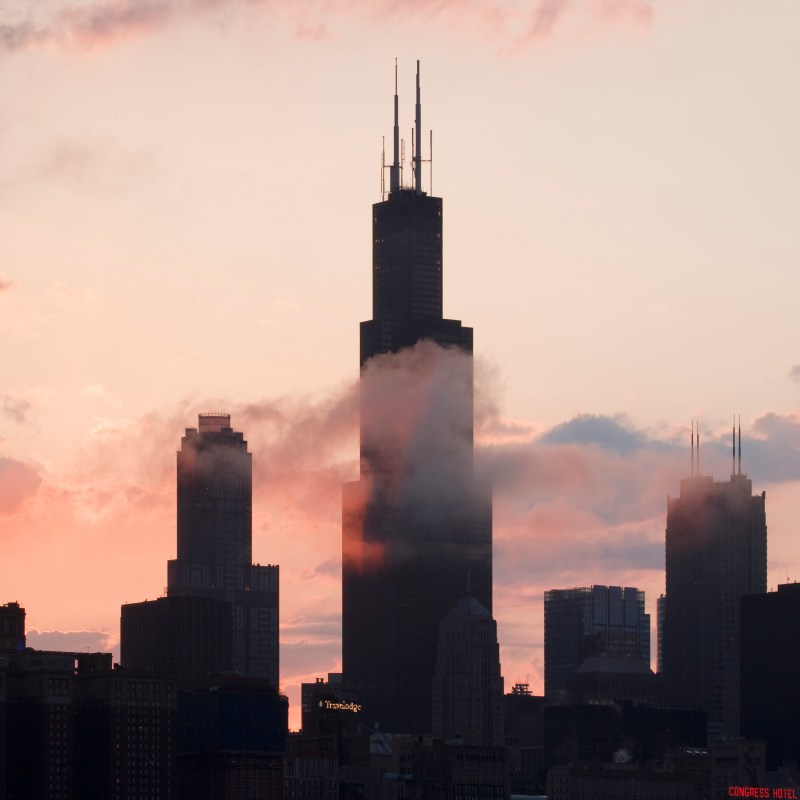
As a Midwesterner who lives in Europe, I bring up Chicago a lot—usually to better describe where I’m from.
Videos by TravelAwaits
It goes something like this, “Where in the US am I from? It’s called Missouri. No, Mississippi is a different state. So is Michigan. Yeah, we also have a Minnesota. I know, it’s confusing. Have you heard of Chicago? I’m from just south of there.”
Then comes a little introduction to Chicago.
While many people have heard of this famous Midwestern hub, they usually know a lot more about coastal cities like NYC, Boston, LA, and Miami.
Every now and then, however, someone’s eyes light up when I talk about Chicago. Usually, they bring up architecture. Similar to Saint Louis (home to some of the US’s most stunning brick buildings), Chicago is an architectural hub. One with famous buildings in a diverse range of styles.
Just take a look at the list of popular Chicago tours—quite a few touch on architecture. Whether watching buildings drift by from a river cruise, heading into some of the coolest buildings for a look at their interiors, or strolling down the Magnificent Mile, you’ll have plenty to keep you busy if you’re a fan of architecture and history.
But with dozens of famous sites to see, which buildings should you make sure not to miss while in the Windy City? Start with these 14 picks, which cover the most famous architecture in Chicago.
Famous architecture in Chicago: 12 buildings you can’t miss
- The Willis Tower (formerly Sears Tower)
- Wrigley Building
- The Tribune Tower
- The Rookery Building
- South Shore Cultural Center
- Marina City Towers
- 875 N. Michigan Ave (formerly John Hancock Center)
- Chicago Board of Trade Building
- TheMART (formerly The Merchandise Mart)
- Chicago Cultural Center
- The Aqua Tower
- The St. Regis
Famous architecture in Chicago: a closer look
Willis Tower (formerly Sears Tower)
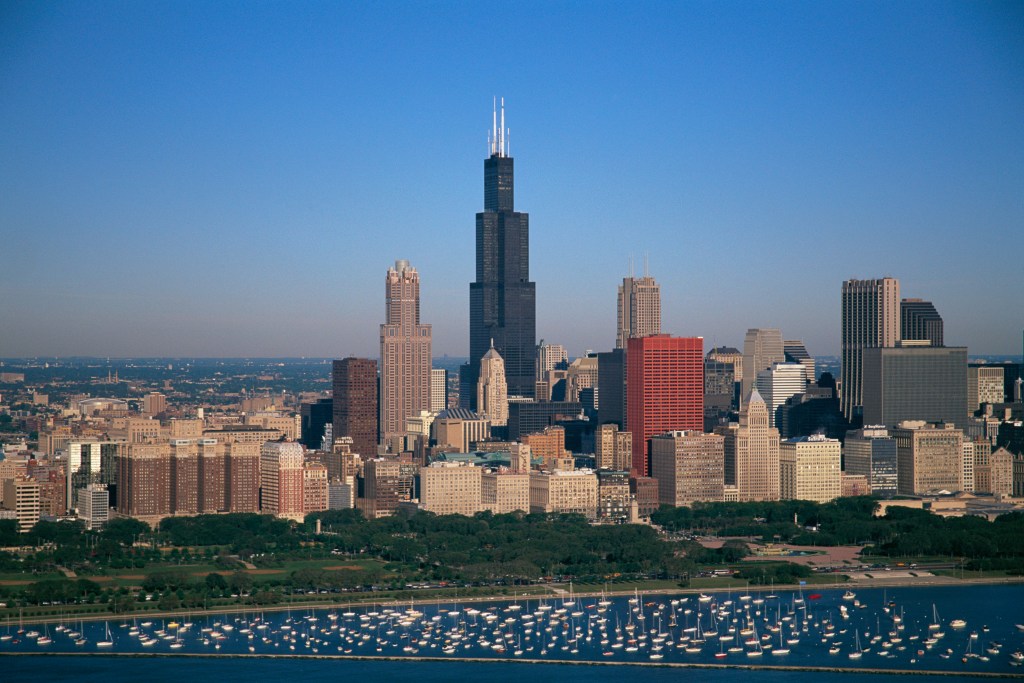
- Completed: 1973
- Architect: Bruce Graham, Fazlur Rahman Khan
The tallest skyscraper in the world from 1973 until 1998, Willis Tower is one of the most iconic buildings in the United States—and, for a while, the world. Today, it’s the second-tallest building in the US behind One World Trade Center. You can visit the top of the tower and enjoy a death-defying observation deck experience.
Wrigley Building
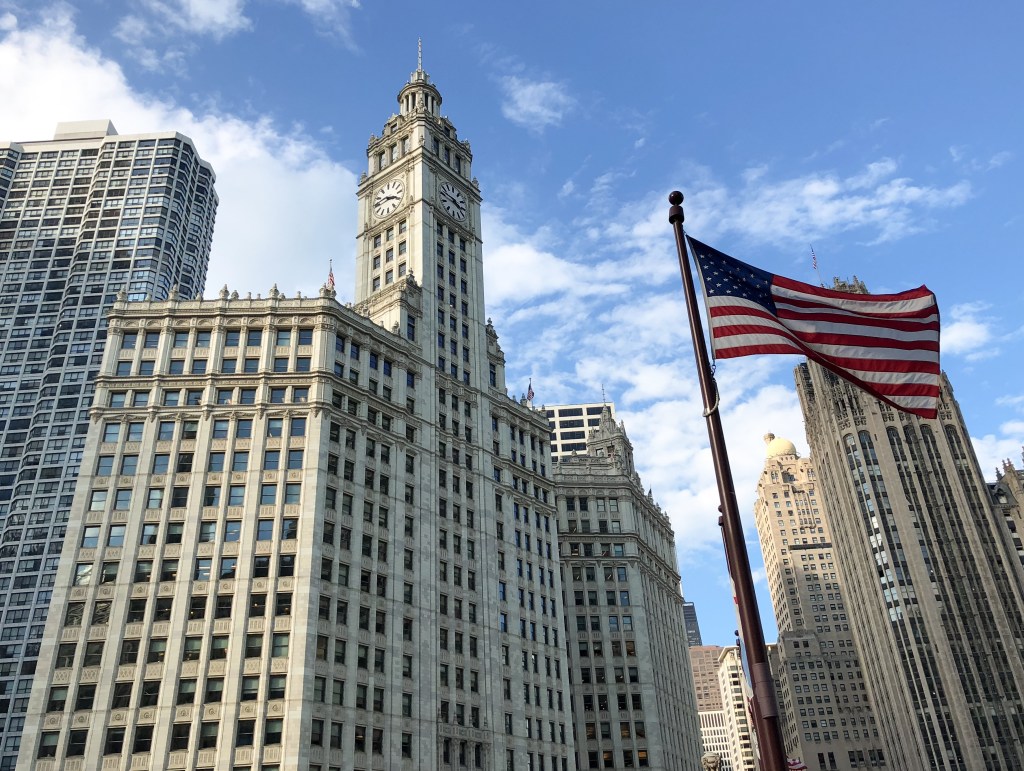
- Completed: 1921
- Architect: Graham, Anderson, Probst, & White
Constructed before any major buildings were standing on the Chicago River, the Wrigley Building was the first of its kind. (It was also the first building in the city to get air conditioning. Its architects and engineers were inspired by the Giralda Tower of the Seville Cathedral.
Tribune Tower
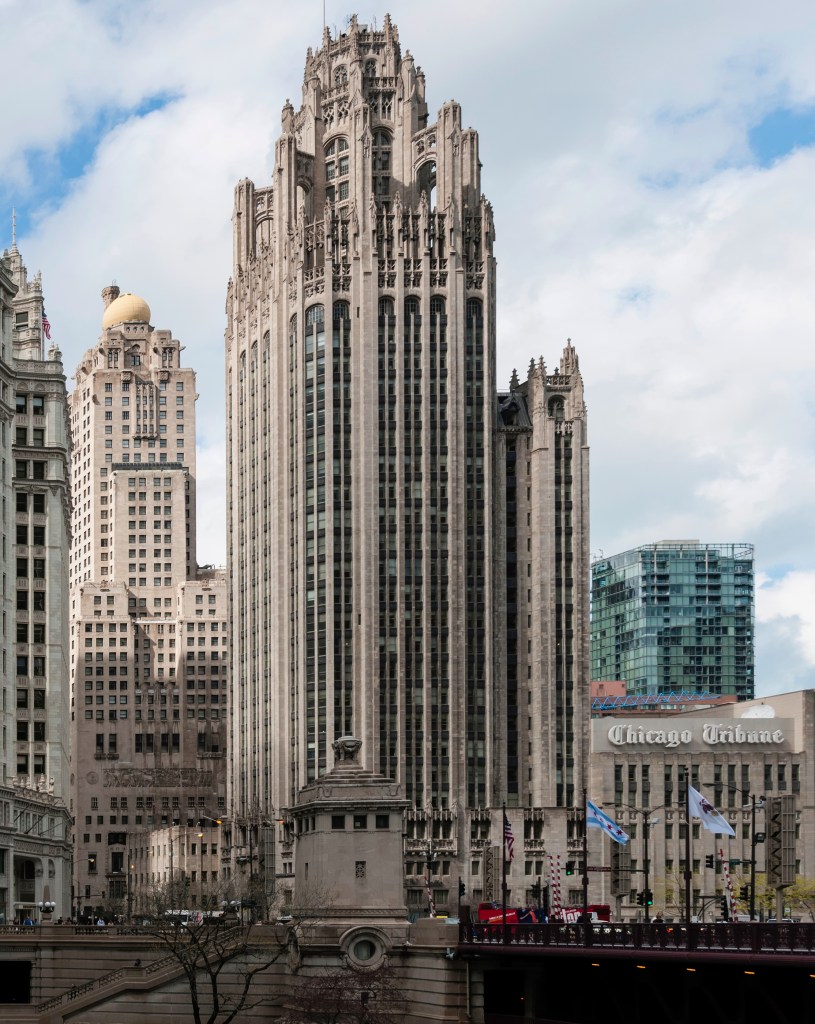
- Completed: 1925
- Architect: Raymond Hood, John Meade Howells
We tend to picture those moody, Gothic-style buildings as being shorter and more reminiscent of the Medieval era, in which the style was popularized. But that’s not the case with the Tribune Tower. During the early 1900s, Gothic Revivalism was enjoying a comeback. The Tribune Tower is a masterclass in this style, with commanding flying buttresses near its top. (Fun fact: the Tribune Tower and Wrigley Building are located across the street from each other.)
The Rookery Building
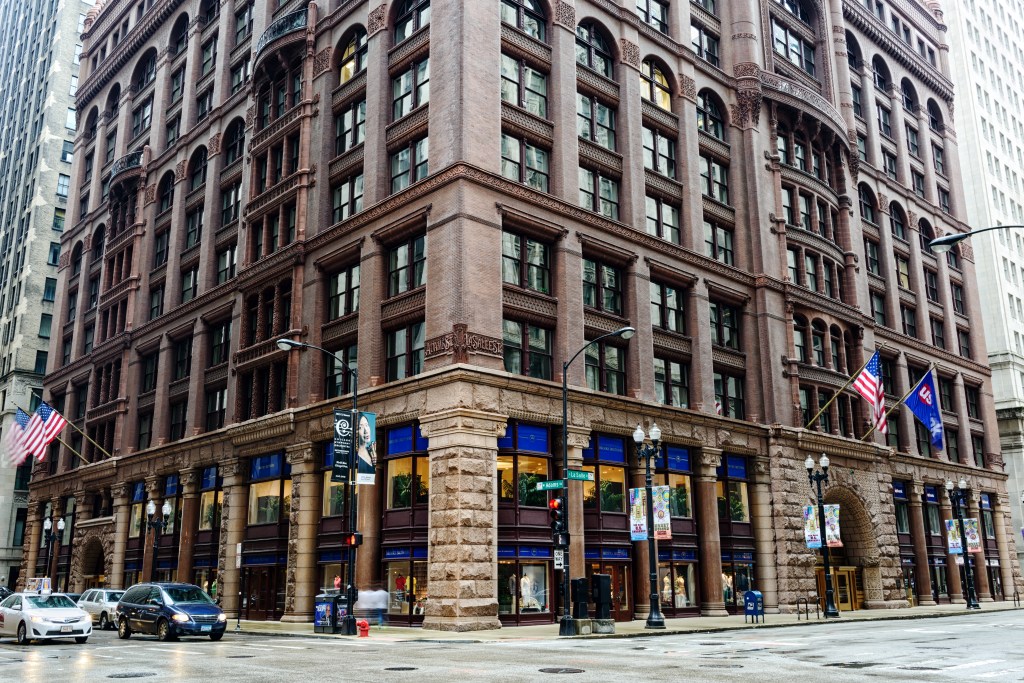
- Completed: 1888
- Architect: Daniel H. Burnham, John Wellborn Root
Following the Great Chicago Fire of 1871, many parts of the city were still being reconstructed. The goal of the Rookery was to provide Chicago with a new flashy high-rise, which was used largely for commercial purposes. The bold building draws on plenty of diverse inspirations, from Venetian design to Moorish treatments. In 1970, it was added to the national historic registry.
South Shore Cultural Center
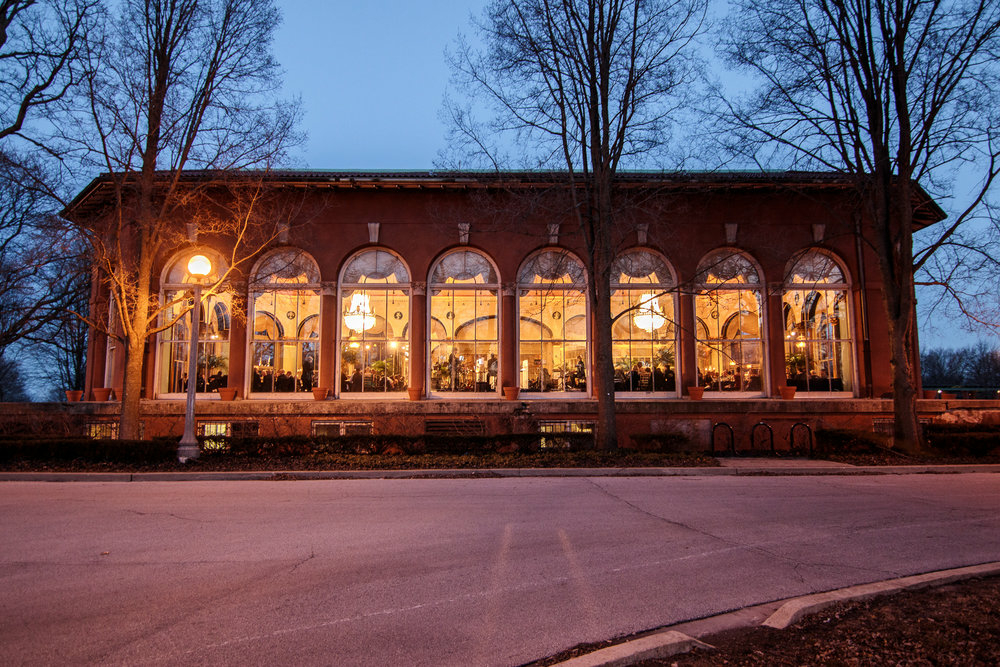
- Completed: 1908
- Architect: Marshall & Fox
This is a smaller building that’s easier to miss, but it’s one of my favorite spots to visit in Chicago. Located in the South Shore neighborhood, this South Shore Cultural Center is a gorgeous Mediterranean-style Villa. For decades, it was a private country club, but now is part of the Chicago Park District.
Marina City

- Completed: 1963-67
- Architect: Bertrand Goldberg
If you’ve visited Chicago and caught sight of two massive towers across from the Loop and thought… that looks like something out of a Sci-Fi film from the 80s, you were probably looking at Marina City Towers. Though symbolically built to resemble the corn cobs common to Illinois, they look way cooler, in my opinion. When they were completed in the 60s, they were the tallest residential buildings in the world.
875 N. Michigan Ave (formerly John Hancock Center)
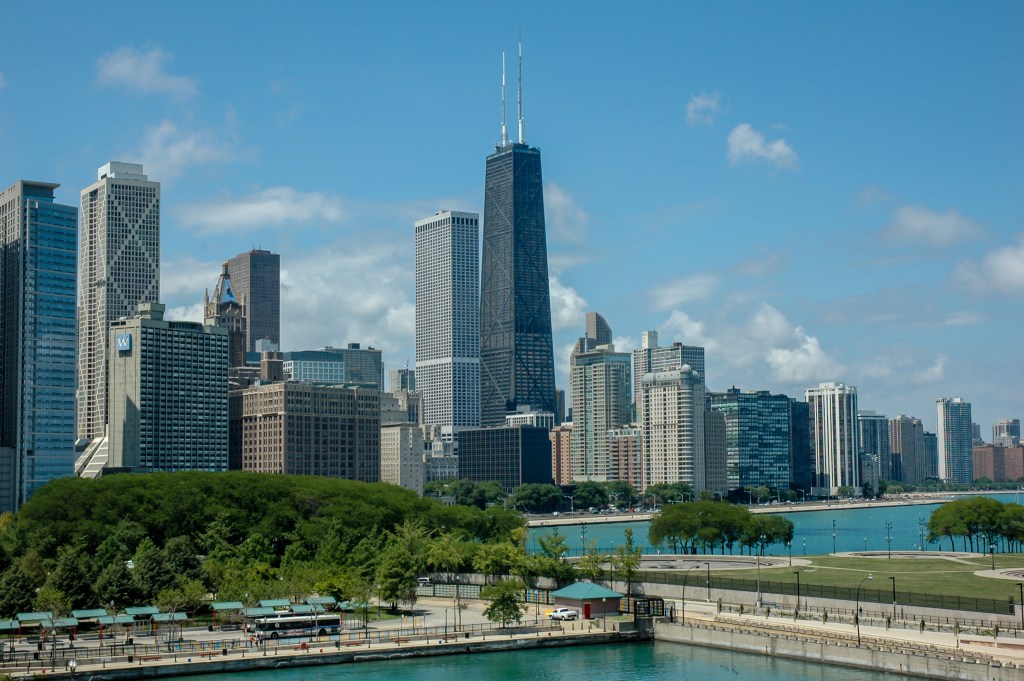
- Completed: 1969
- Architect: Bruce Graham, Fazlur Rahman Khan
Along with Willis Tower, 875 N. Michigan Ave (aka the John Hancock Center) are the two most iconic famous buildings in Chicago—and that’s thanks to Fazlur Rahman Khan. This Bangladeshi-American engineer helped design both. (He’s been called the Einstein of structural engineering.) Today, it’s used for commercial and residential purposes.
Chicago Board of Trade Building
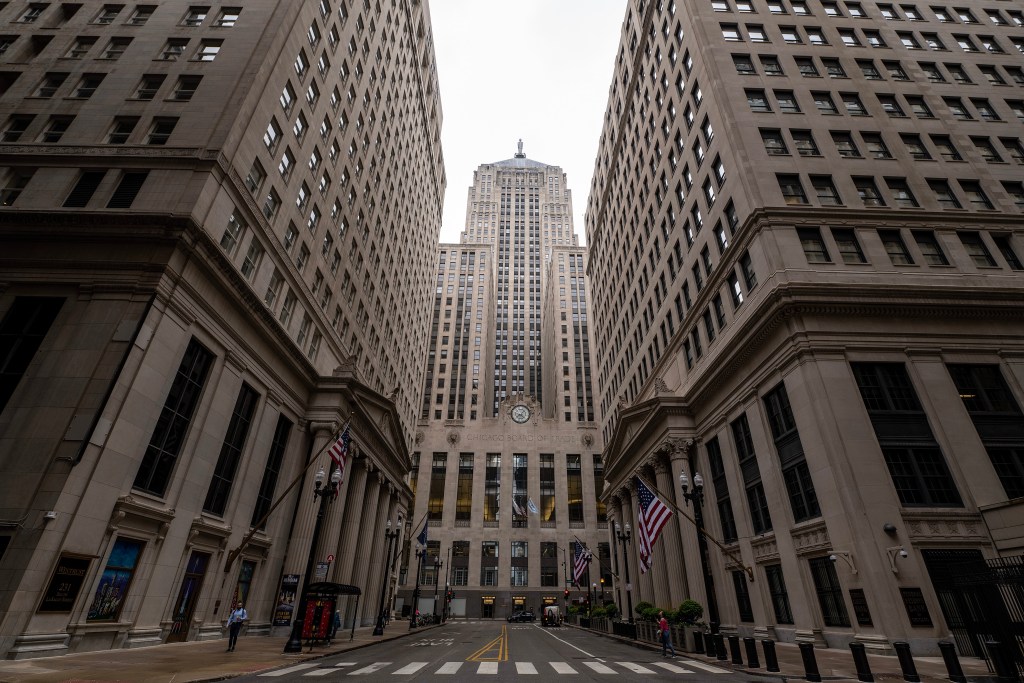
- Completed: 1930
- Architect: Holabird & Root
This grand Art Deco skyscraper has been the stomping grounds of the Chicago Board of Trade (aka CBOT, and later CME after a merger) for almost a century. Located on the popular Loop, it’s also known for its 30-foot Roman goddess statue that stands at its apex. The goddess is Ceres, the Goddess of Grains—yet another callback to those Illinois farmlands, like Marina City.
TheMART (formerly The Merchandise Mart)

- Completed: 1930
- Architect: Graham, Anderson, Probst, & White
As with the CBOT building, TheMART is yet another bulky Art Deco building, this one located at a junction in the Chicago River. (Seriously, it’s huge enough that it has its own zip code.) You’ll definitely spot it if you go on a river cruise—or you might even end up inside shopping. Since it was opened, it’s been an important commercial space for the city.
Chicago Cultural Center
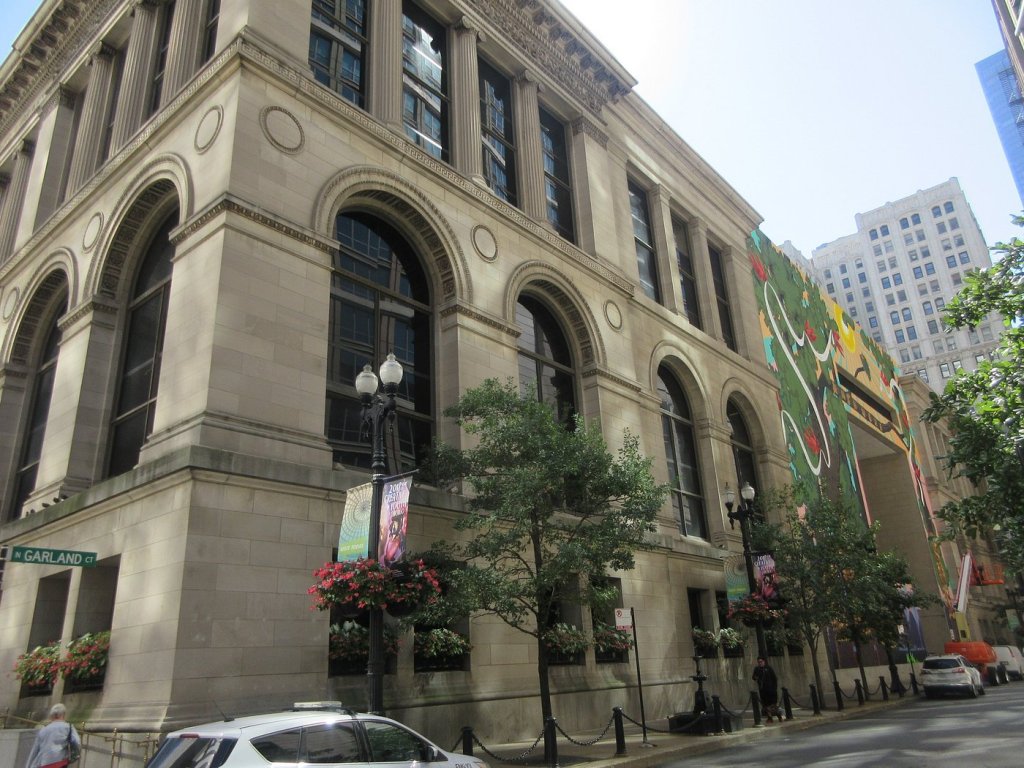
- Completed: 1897
- Architect: CA Coolidge, Robert C. Spencer
For over a century, the Chicago Cultural Center has played a pivotal role in the city’s operations. From hosting big-wig mayoral welcoming ceremonies to operating public libraries, it’s a tourist attraction that also serves the community. Though a little basic from the outside, its interior features are drool-worthy.
The Aqua Tower

- Completed: 2009
- Architect: Jeanne Gang
It’s visually stunning, bird-friendly, and includes gazebos, gardens, and pools on its many rooftop areas. It’s got residential and commercial spaces, along with a hotel where you can actually stay. Uniquely, it was also built to be more environmentally friendly than similar skyscrapers; a whopping 84% of construction waste was recyclable. Welcome to the new school of famous architecture in Chicago.
St. Regis
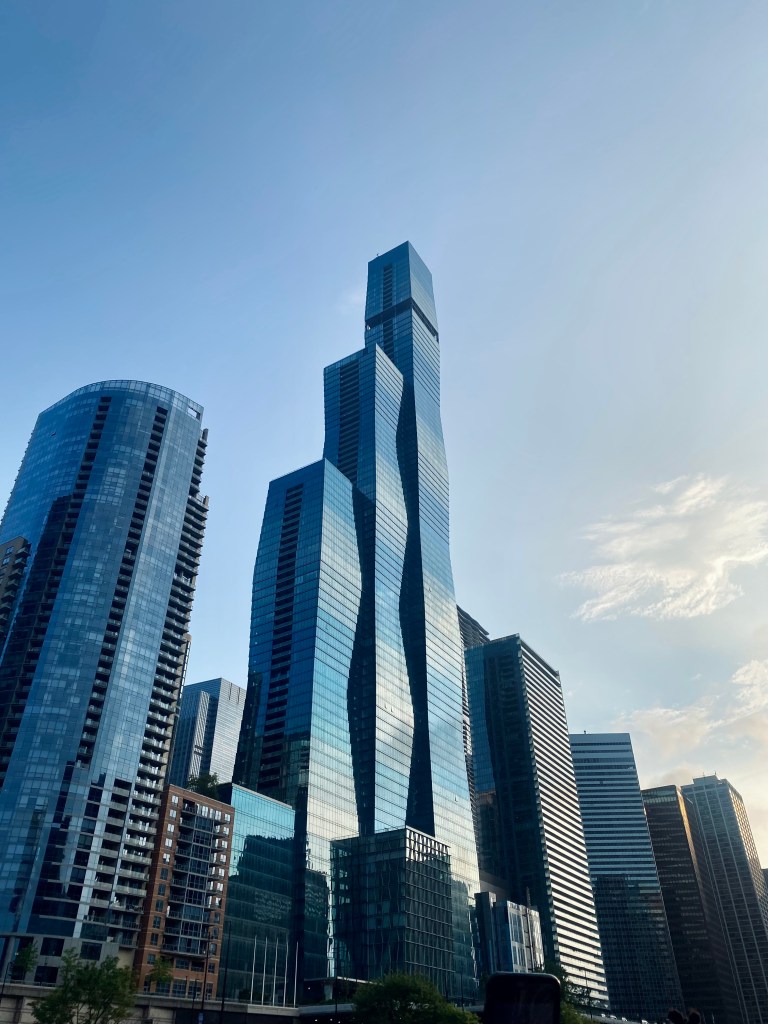
- Completed: 2020
- Architect: Jeanne Gang
Like the Aqua Tower, this commanding and new skyscraper was designed by Jeanne Gang—and upon its completion in 2020, was the tallest building in the world designed by a woman. Once again, sustainability was an important factor in its construction. However, visual design is another standout feature; there are three towers that are slightly curved and include ‘wind tunnel floors’ to reduce wind sway.
